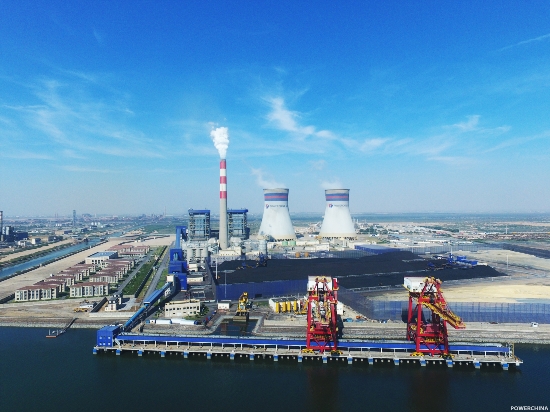The Port Qasim Coal-fired Power Plant constructed by POWERCHINA exceeded 10 billion kWh in cumulative power generation capacity on May 6, passing a new milestone for the Pakistan government's top engineering project.
The 1,320MW (2x660MW) supercritical coal-fired plant, which is located approximately 37km southeast of Karachi, is one of the priority energy projects developed in the China Pakistan Economic Corridor (CPEC). It is sponsored by POWERCHINA and Al-Mirqab.
Major construction works began in May 2015. The first unit of the project started power generation in November 2017, while the second unit was connected to the grid in January 2018 and commissioned in April 2018.
Since being operational, the project has generated about 10 percent of the total electric power generated in Pakistan, meeting the demand of several million local households for efficient, clean, cheap, and continuous energy.
Compared with traditional oil-fired generating units, the supercritical units have higher power generation efficiency and are more environmentally friendly.
 |
|
The Port Qasim Coal-fired Power Plant has produced a cumulative power generation capacity of over 10 billion kWh as of May 6. [Photo/POWERCHINA] |
Applying its concept of "scientific development, green development," POWERCHINA equipped the power plant with seawater secondary circulation cooling and seawater desalination, which are used to supplement its water requirements.
Limestone-gypsum wet desulfurization technology is also adopted to meet and surpass the local environmental protection standards.
Since the first unit began producing power, more than 2.2 million tons of freshwater has been saved. At the same time, POWERCHINA has transplanted and planted 125 acres of mangroves, maintaining a good ecosystem while providing a continuous supply of electricity to the local area.
POWERCHINA's commitment to its principle of "achieving shared growth through discussion and collaboration" was evident as the enterprise proactively shared advanced technologies with its Pakistani partners and gave preference to local workers when recruiting.
The project created more than 2,000 jobs in the local area during construction and about 600 long-term positions were offered during operations period.
It has become a successful model for energy cooperation between China and Pakistan with strong political, economic, and social significance.